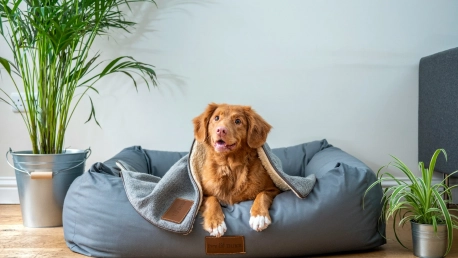Rising veterinary costs and progress in pet healthcare are propelling owners to seek financial protection for their animals. Insurers are adapting, offering customized policies to meet this demand, as the pet insurance sector is poised for substantial growth, according to a ResearchAndMarkets.com report. With changing regulations and increasing pet-related spending, the next ten years look set to be pivotal for the pet insurance industry. As treatments become more sophisticated and expensive, the market adjusts, anticipating the needs of pet owners who wish to safeguard their pets’ health without facing prohibitive costs. This trend reflects a deeper recognition of pets as valuable family members, whose well-being warrants similar protections afforded to human relatives, thus redefining the nature of pet care and insurance for the future.
The Rising Tide of Veterinary Costs and Pet Expenditures
The Impetus Behind Soaring Pet Insurance Adoption
The escalating expenses of veterinary services are a growing point of anxiety for dedicated pet parents. As more advanced and thus expensive treatments become the norm, the financial strain on animal lovers intensifies. This has led to a noticeable shift toward pet insurance as a buffer against the unpredictability of healthcare costs. Insurance provides a safeguard, making it possible for owners to afford critical care without the immediate pressure of steep bills. Awareness of these financial risks is undeniably behind the expansion of the pet insurance market. As it stands, the industry is not only responding to the current demand but is also propelled by the anticipation of future veterinary advancements and the associated costs. Owners are increasingly recognizing that investing in pet insurance is a proactive step in ensuring their companions receive prompt and comprehensive medical attention when required, without compromising their financial stability. This trend toward insurance demonstrates a shift in how pet health is valued and managed, reflecting broader societal changes toward the stewardship of animal welfare.
Record-Setting Pet Expenditures Fueling Market Growth
In 2023, pet lovers are breaking records with their spending, as figures from the American Pet Products Association (APPA) reveal expenses surpassing $100 billion. This significant investment reflects the comprehensive nature of pet care, encompassing everything from daily sustenance to health services. As costs spiral upwards, pet insurance emerges as a vital component of pet care, emphasizing the lengths to which pet owners will go to ensure their furry friends’ health and happiness. The willingness to invest such large sums demonstrates the special place pets hold in their owners’ lives. It also highlights the growing market for pet-related products and services, fueled by the demand for quality care. Considering the substantial financial outlay, pet insurance becomes more than just a luxury; it’s increasingly viewed as a necessary safeguard for managing potential veterinary expenses. This trend toward higher spending is reshaping the pet care industry, placing a spotlight on the value of pet insurance in mitigating the risk of unforeseen costs, and confirming the indispensable role pets play in modern family dynamics.
Insurance Offerings Evolve: Customization and Variety
Nationwide’s Leap: Customizable Pet Insurance Products
In August 2023, Nationwide took a significant step forward by unveiling their innovative pet insurance products, specifically designed to be highly adaptable to the diverse requirements of pet owners. Recognizing the shift in consumer preferences toward tailor-made insurance policies that cater to the unique circumstances of each pet, Nationwide’s initiative serves to transform the insurance landscape. The introduction of this flexible insurance model showcases their commitment to providing their customer base with a variety of coverage options, ensuring not only a competitive edge in the market but also customer satisfaction and loyalty. This strategy underscores the industry’s acknowledgment of the pressing need for customized insurance offerings and sets a benchmark for competitors, who are now encouraged to follow suit in order to stay relevant and appealing to discerning consumers. Nationwide’s move epitomizes the dynamic nature of consumers’ expectations and the growing propensity toward personalization in insurance services.
Providers Broaden Horizons to Accommodate Diverse Needs
Insurance companies are increasingly adapting their offerings to cater to a diverse range of needs among pet owners. This trend highlights a growing industry emphasis on customizable pet insurance solutions, enabling owners to find policies that align with both their financial constraints and the unique health requirements of their animals. By expanding their portfolios to include a variety of coverage options, insurers demonstrate responsiveness to customer preferences, ensuring that pet owners have access to tailored insurance plans. Such advancements in the insurance sector underscore a forward-looking approach that promises to serve the interests of both the insurance providers, who are tapping into a dynamic market, and pet owners, who can enjoy greater peace of mind. The trajectory of pet insurance innovation is poised to enhance the way owners invest in the wellbeing of their beloved animal companions, leading to a mutually beneficial environment for all involved in the pet care ecosystem.
Regulatory Frameworks as Demand Catalysts
Pet Insurance Mandates and Legislation
In several European nations, the concept of optional pet insurance has evolved into a legal requirement, compelling owners to secure coverage for their pets. This demonstrates a trend toward recognizing the importance of pet health and welfare at the legislative level. Similarly, in the United States, there is a growing regulatory influence, such as the establishment of the NAIC Pet Insurance Model Act, which serves as a guide for states considering the regulation of pet insurance. These legislative efforts underscore the expected responsibilities of pet ownership and the need to mitigate the financial risks associated with veterinary care. As governments take these steps, the pet insurance market is likely to see a boost in demand. This could lead to more widespread adoption due to the framework set by these regulations. It’s indicative of a broader movement toward integrating pet health into the fabric of societal norms, reflecting the significant role pets play in the lives of many and the need for measures to support responsible pet ownership.
Regulatory Compliance Spurs Market Penetration
Adhering to health standards and pet travel regulations, such as those set by the EU Pet Travel Scheme, is not just a moral obligation for pet owners but also adds value to the concept of pet insurance. As owners prioritize their pets’ health and safety, especially when traveling, they are increasingly recognizing the importance of having insurance coverage. This trend in pet ownership highlights the dual benefits of insurance: compliance with legal requirements and peace of mind. In light of stringent travel policies, the requirement for pet insurance is pitched not only as a safety net for unforeseen medical needs but also as a passport for pets to travel across borders, reinforcing its market appeal. Thus, pet insurance is becoming an integral aspect of responsible pet ownership, providing a cushion against potential risks while fulfilling regulatory mandates. This ensures that pets can accompany their owners during travels without complications, aligning with the rising demand for thorough pet care and owner accountability.
Segment Insights: Accident & Illness Coverage Leads the Charge
Dominance and Future of Accident & Illness Coverage
In 2023, the pet insurance market is led by the accident & illness insurance category, which captures an impressive 84.94% market share. This sector is not only dominant now but is also predicted to continue its growth trajectory, with forecasts showing a Compound Annual Growth Rate (CAGR) of 16.95% from 2024 to 2030. One of the key factors propelling this expansion is the rising concern among pet owners about the frequency and potential costs associated with health-related emergencies for their pets.The financial burden of unexpected medical care can be substantial, and this drives pet owners to safeguard against such expenses through comprehensive insurance policies. As the cost of veterinary services increases and pets become ever more integral to family units, it’s expected that this form of insurance will become increasingly prevalent. These trends indicate a burgeoning marketplace with accident & illness coverage at the forefront, providing peace of mind to pet owners and a growing customer base for insurers.
The Growth Horizon for Diverse Animal Insurance
While canines continue to dominate the pet insurance industry, there’s an emerging trend that suggests significant growth in coverage options for a broader range of animals. This expansion is likely to be particularly notable among exotic pets and horses. Current projections indicate that insurance for small mammals, avian species, reptiles, and equine pets is poised to see the quickest rise in the near future. This uptick underscores a growing recognition of the importance of safeguarding the wellbeing of diverse pet types with adequate insurance plans.As more pet owners become aware of the risks and potential costs associated with caring for their animal companions, the demand for comprehensive insurance policies is set to increase across the board. The shift toward insuring less traditional pets speaks to a deeper understanding of these animals’ value and the desire to ensure their health and safety through financial protection. Consequently, this budding sector of the pet insurance market is forecasted to expand as owners of these beloved creatures seek the peace of mind that comes with having reliable insurance coverage.
Sales Channels and Geographic Market Analysis
Direct Sales: The Preferred Route to Pet Insurance
Direct sales are currently at the forefront of effective pet insurance distribution and are expected to maintain this lead. This strategy is superior because it allows insurers to connect directly with customers, providing them with a streamlined and more personalized buying experience. By eliminating intermediaries, direct sales enable insurers to better understand and meet the individual needs of pet owners, which fosters a stronger bond between the customer and the insurer. Customers who find the process of purchasing insurance straightforward and tailored to their requirements are more likely to remain loyal, which is beneficial for insurance providers. These providers not only expand their customer base but also see an increase in customer retention. The direct sales model is thus a key channel that can yield significant market share growth and strengthen customer relationships over time. Companies adopting a direct-to-customer approach are likely to continue to outperform competitors who rely on less engaging, traditional methods of insurance distribution.
The Geographic Variance in Pet Insurance Growth
In 2023, Europe leads the global pet insurance sector, holding a 44.19% share, highlighting its dominance in this industry. This region’s long-established pet care infrastructure and high rates of pet ownership contribute to its market position. As for the Asia Pacific region, it is on a trajectory to become the fastest-growing market with a CAGR of 6.63% through to 2030. This rapid expansion is attributed to a rising number of pet owners and a greater recognition of the benefits of pet insurance. Economic growth and an increase in disposable income in this region are also factors enhancing market growth, as citizens are more able to afford insurance for their pets. Additionally, government initiatives and an uptick in animal healthcare facilities are contributing to this upswing. The changing perceptions toward pet ownership, viewing them more as family members rather than just animals, also play a crucial role in the proliferation of pet insurance across these regions.
Pet Ownership Trends and Insurers’ Strategies
Rise in Global Pet Adoptions Impacting Market Size
The rise in pet adoption rates worldwide has had a knock-on effect on the pet insurance industry, as insurers witness a growing demographic of pet owners who could potentially become policyholders. As more individuals bring pets into their homes, the market for pet insurance similarly experiences an upswing. This burgeoning sector is propelled by the understanding that with more pets comes a greater likelihood of the owners seeking insurance protection for their animal companions.Insurance providers are therefore incentivized to innovate and expand their offerings to cater to this larger customer base that’s looking for ways to mitigate the financial risks associated with pet care, such as veterinary bills for illnesses or injuries. The direct relationship between the increasing number of pet owners and the uptake in pet insurance underscores the dynamic expansion of the industry.This trend reflects a broader shift in consumer behavior that considers pets as integral family members worthy of comparable care and protection. As the pet insurance market expands, it continues to evolve, offering more diverse and comprehensive coverage options to meet the specific needs and concerns of this wider pet-owning audience, assuring them that their furry, feathered, or scaly friends have a safety net.
Innovative Strategies Fueling Competitiveness
In the competitive world of insurance, companies are finding inventive ways to stand out through mergers, acquisitions, and forging strategic partnerships, all in a bid to extend their influence across the market. With so many entities vying for a leading position, the ability to innovate has become crucial for survival and prosperity. By crafting and offering unique insurance products and services, these businesses can distinguish themselves from the competition, ensuring that they stay prominent and relevant in an ever-growing industry. This approach of differentiation not only underscores a company’s uniqueness but also drives the entire market forward, spurring on expansion and the cultivation of new customer bases. In doing so, insurance companies are not just incrementing their potential for growth but are also enhancing the industry’s dynamism and resilience, which is vital in meeting the evolving needs of consumers.
The Competitive Landscape: Key Market Players
Leading Innovators in the Pet Insurance Space
Trupanion, Inc. and Deutsche Familienversicherung AG (DFV) are standout innovators in the realm of pet insurance. Their progressive approaches are defining the future of the industry. By developing groundbreaking strategies and novel services, they play a central role in setting industry trends and influencing how the market evolves, serving as benchmarks for other companies in the space.These companies’ willingness to experiment with new ideas and adapt to changing customer needs exemplifies their leadership in the sector. Their influence extends beyond their own customer base, as their pioneering work encourages others to follow suit, leading to a competitive and dynamic market. These efforts not only benefit pet owners but also drive advancements that could have wider implications for insurance offerings and customer service models across the board.As leaders, Trupanion and DFV demonstrate how innovative thinking and a commitment to service enhancement can catalyze change in a traditional industry. Their example challenges fellow insurers to think creatively and embrace progressive change, ensuring the pet insurance market remains vibrant and responsive to the needs of pet owners worldwide.
Market Differentiators and Competitive Tactics
To secure their position in the dynamic pet insurance market, insurers are adopting aggressive marketing techniques. This involves creating unique, custom products designed to cater to specific customer needs and preferences. Additionally, they engage in strategic partnerships to expand their reach and influence. These maneuvers are not only meant to set them apart from their rivals but are pivotal in establishing and maintaining a robust market presence amid the continuously changing landscape of the pet insurance industry. By leveraging such strategies, insurers ensure that they remain at the forefront of the industry, ready to meet both current and emerging customer demands. Their efforts reflect a keen understanding of the market and a commitment to innovation and customer satisfaction, which are essential for long-term success in this sector.









